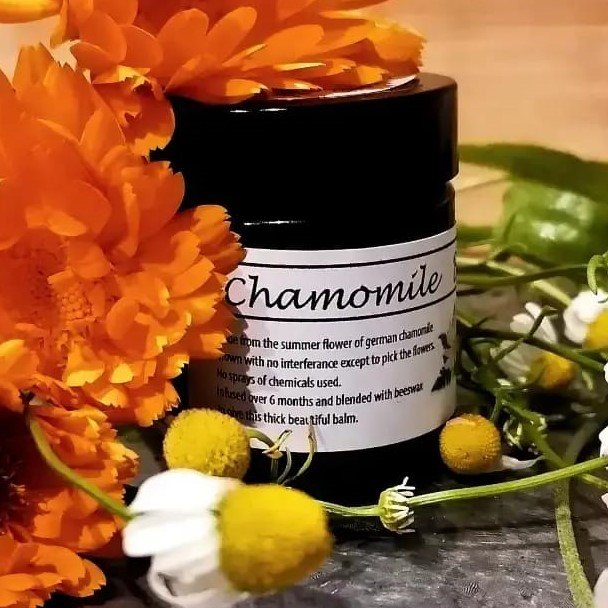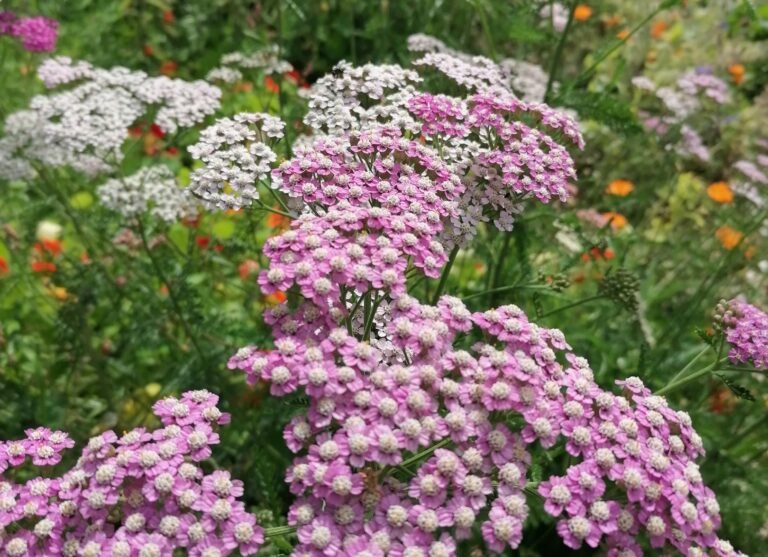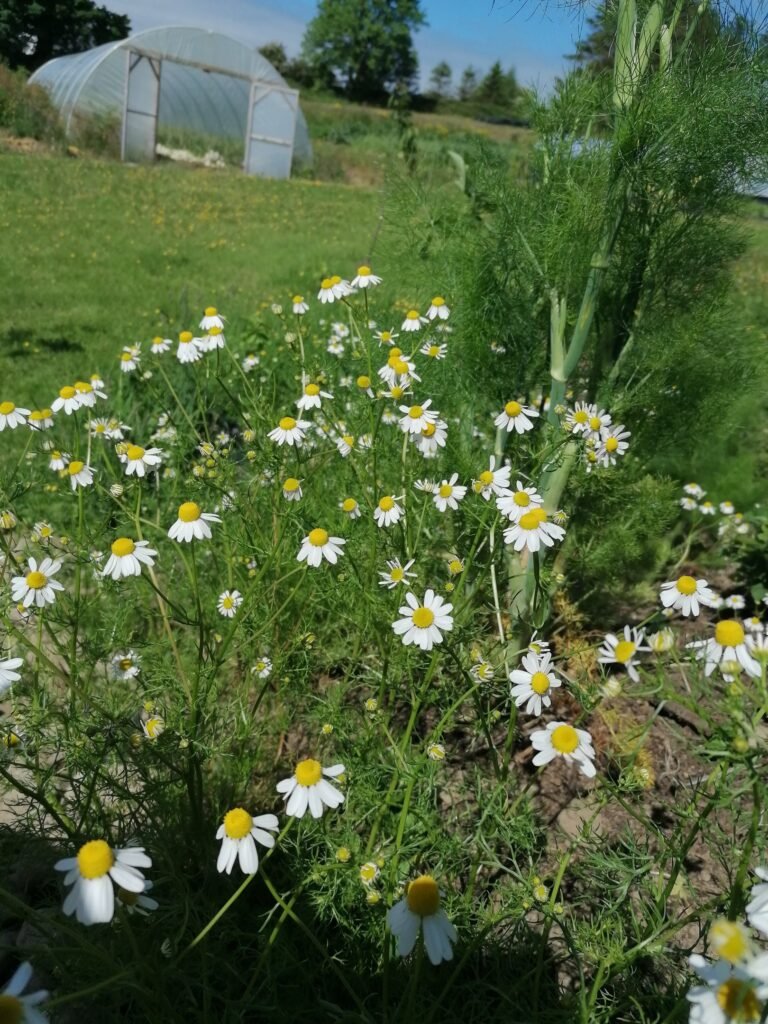
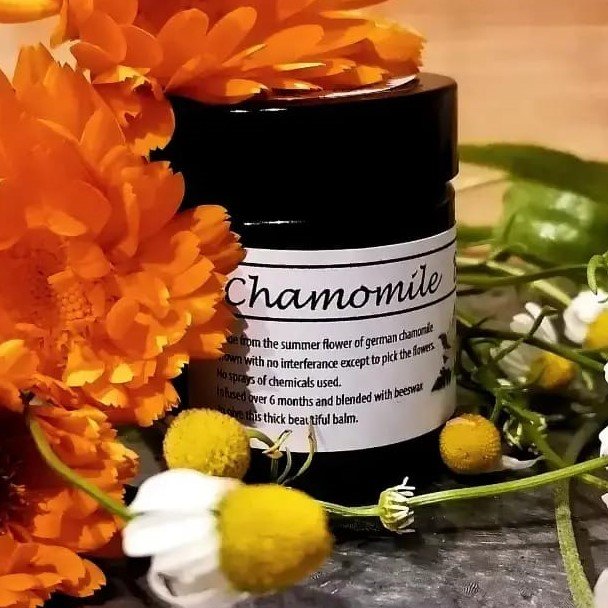
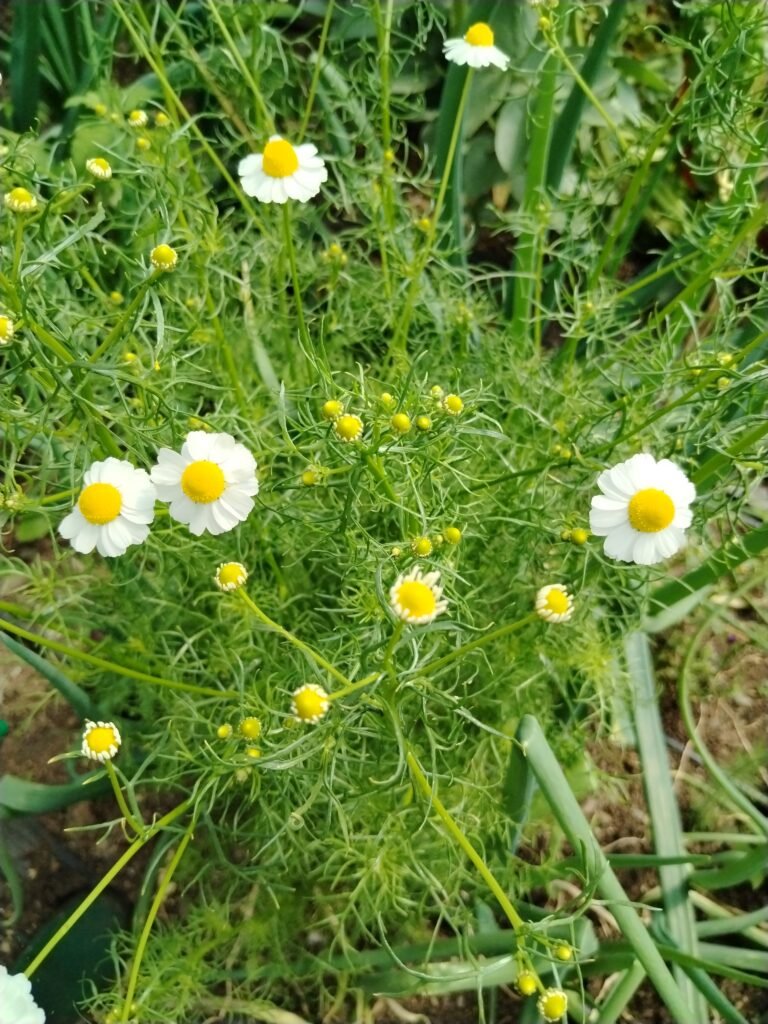
Did you know that chamomile has been used in skincare for over 5,000 years? From ancient Egyptian beauty rituals to modern-day natural cosmetics, this gentle powerhouse of a plant has stood the test of time! I’m excited to dive into the incredible world of chamomile skincare benefits with you. Whether you’re dealing with sensitive skin, looking to calm inflammation, or wanting to create your own botanical beauty garden, chamomile might just be your new best friend. Let’s explore how this humble flower can revolutionize your skincare routine!
Understanding Chamomile Varieties for Skincare
When it comes to chamomile, not all flowers are the same. Two varieties stand out for skincare: German chamomile and Roman chamomile.
German Chamomile
German chamomile (Matricaria recutita) grows tall, reaching up to 24 inches. Its flowers have drooping white petals and a hollow, cone-shaped yellow center. This variety is the star of skincare due to its high chamazulene content. Chamazulene gives German chamomile essential oil its deep blue color and powerful anti-inflammatory properties.
Roman Chamomile
Roman chamomile (Chamaemelum nobile), on the other hand, grows low to the ground, reaching about 12 inches. Its flowers have a solid, flatter yellow center and smell like fresh apples when crushed. Roman chamomile shines in skincare for its soothing properties, thanks to its higher concentration of esters.
Both varieties share bisabolol, a compound that enhances skin penetration and fights inflammation. They’re also rich in apigenin, a flavonoid with antioxidant benefits to combat aging and environmental damage.
Interestingly, ancient Egyptians used chamomile in beauty rituals thousands of years ago. Today, many small-scale farmers grow both types for natural skincare, preserving their beneficial properties through traditional harvesting methods.
Growing Your Own Chamomile for Skincare
Ready to become a chamomile gardener? Let’s get growing! While both varieties we discussed can thrive in many climates, German chamomile is your best bet if you’re just starting out. It’s more resilient and adapts beautifully to different growing conditions. Plus, it self-seeds readily, meaning you’ll likely get volunteer plants next season (free chamomile, anyone?)! For those in hot, southern climates, you’ll want to plant in early spring or fall to avoid the scorching summer heat, while northern gardeners can sow directly in spring once the soil temperature reaches 55°F (13°C).
Chamomile babies can spring up anywhere once you start growing this amazing plant!
Here’s what your chamomile babies need to thrive:
- well-draining soil (they hate wet feet!)
- a pH between 6.0-7.0
- about 6-8 hours of sunlight daily
Surprisingly, these powerful medicinal plants actually prefer poor to average soil – no need for fancy amendments! When planting, barely cover the seeds as they need light to germinate, and keep the soil surface moist but not waterlogged. Indoors? No problem! A sunny windowsill or grow light works perfectly, though you’ll want to ensure good air circulation to prevent mold.
Pro tip: use a shallow, wide pot at least 8 inches deep, as chamomile develops a shallow but extensive root system.
The magic moment comes about 6-8 weeks after planting when flowers begin to appear. Harvest them on a dry morning just as the petals begin to arch back from the center – this is when they’re most potent for skincare use. Gently pinch or snip the flower heads, leaving the stems behind. Don’t worry about taking too many; regular harvesting actually encourages more blooms! For drying, avoid direct sunlight (it degrades those precious compounds we want for our skin). Instead, use a dehydrator on low heat (95°F/35°C) or air dry in a well-ventilated, shady spot. Your flowers are ready when they’re completely crisp and crumble easily.
Watch out for common hiccups:
- powdery mildew can be an issue in humid conditions (improve air circulation and avoid overhead watering)
- aphids occasionally crash the party (a strong blast of water usually sends them packing).
The biggest challenge? Overwatering – remember, these flowers have survived in the wild for thousands of years without anyone hovering over them with a watering can!
For sustainable growing, try companion planting with herbs like basil or mint – they’ll help attract pollinators and improve your garden’s biodiversity. Save seeds from your strongest plants for next season, and consider keeping a “mother patch” specifically for seed production. Used chamomile flowers make excellent compost, returning nutrients to your garden soil.
And here’s a lovely bonus:
chamomile flowers attract beneficial insects that’ll help protect your entire garden naturally!
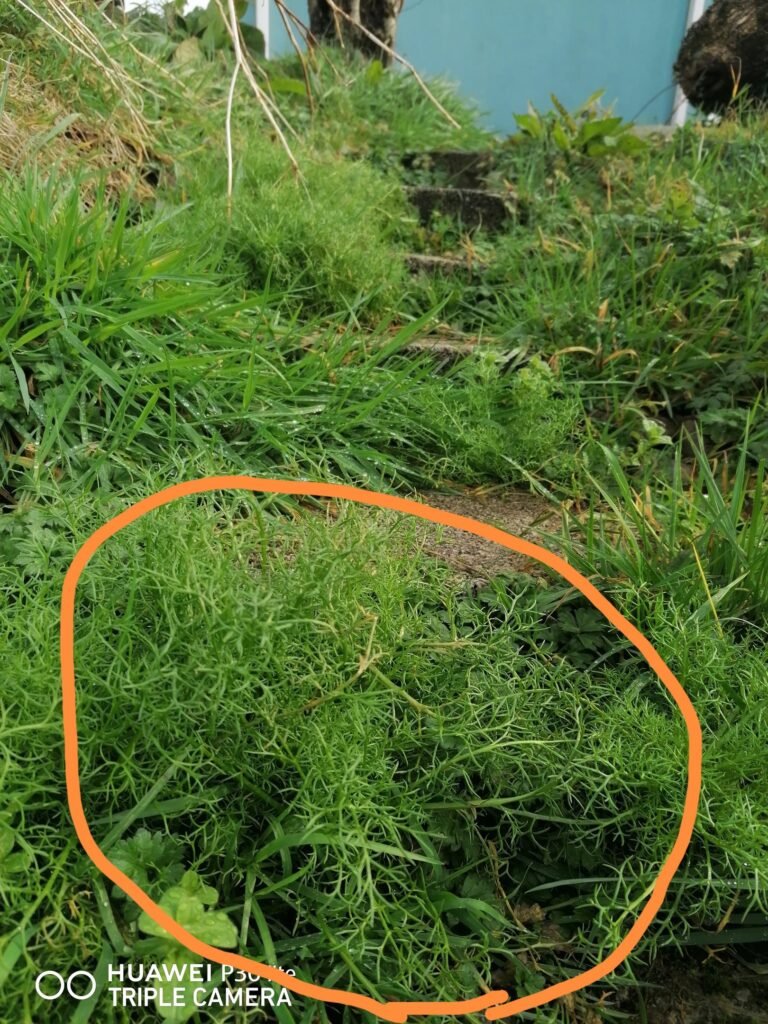

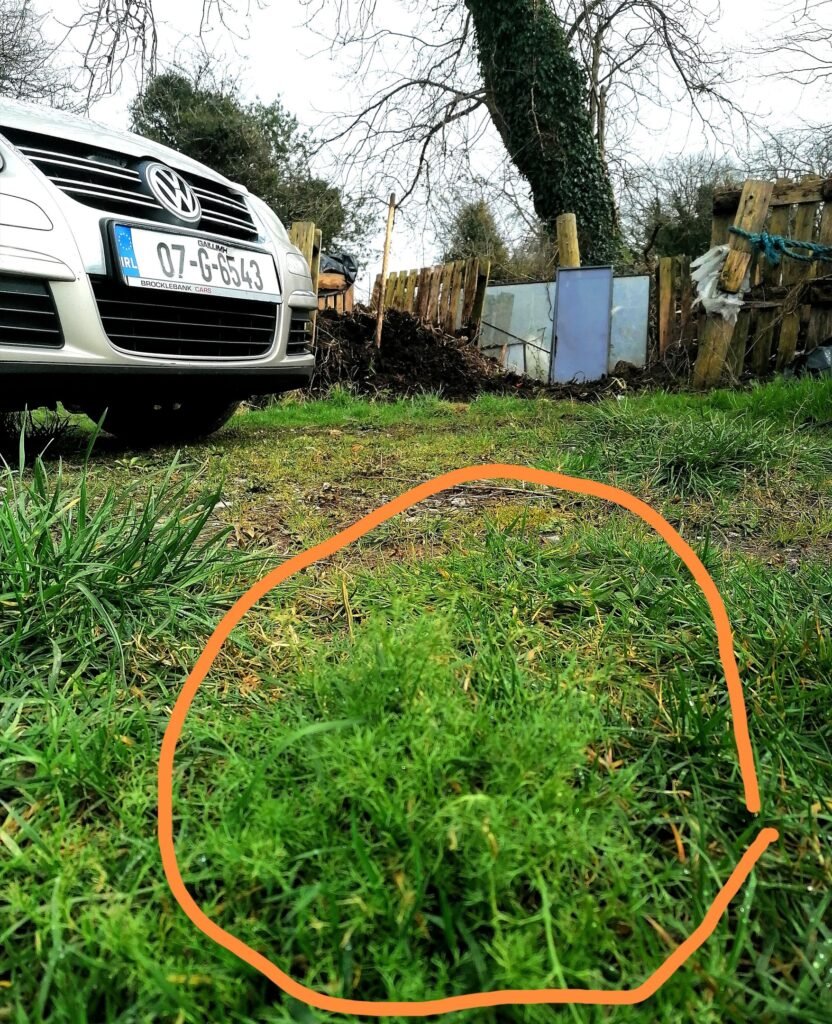
Skin-Loving Benefits of Chamomile
Ever wondered why chamomile keeps popping up in your favorite skincare products? This isn’t just clever marketing – science has our back on this one! Studies have shown that chamomile contains powerful flavonoids and essential oils that make it a genuine skincare superstar. In fact, research published in the Journal of Clinical and Aesthetic Dermatology found that chamomile can reduce skin inflammation by up to 60% – that’s impressive for a humble flower!
Let’s talk inflammation first – it’s chamomile’s superpower! Those blue-tinted compounds we mentioned earlier (particularly chamazulene and bisabolol) are incredible at calming angry, irritated skin. Think of them as tiny firefighters, rushing in to cool and soothe everything from eczema flare-ups to post-treatment redness. What’s really fascinating is how chamomile works on a cellular level, actually blocking the release of histamine and other inflammation-triggering compounds. If you’ve ever pressed a cool chamomile tea bag against a patch of irritated skin and felt instant relief – now you know why!
But chamomile isn’t just about soothing – it’s also your skin’s personal bodyguard against aging!
Its antioxidant properties, particularly from compounds like apigenin and quercetin, work like molecular shields, protecting your skin cells from free radical damage. These sneaky free radicals are responsible for premature aging, breaking down collagen and causing those fine lines we’d rather not see. Recent studies suggest that chamomile’s antioxidant activity might even help protect against UV damage (though don’t toss your sunscreen just yet – think of chamomile as backup support!).
For those battling acne, here’s some good news: chamomile is antibacterial and helps regulate sebum production. But unlike harsh acne treatments that can leave your skin feeling like the Sahara Desert, chamomile balances its acne-fighting properties with gentle moisturizing benefits. It’s like having a mediator that keeps peace between your skin’s need to fight bacteria and its desire to stay hydrated and happy!
Now, let’s match chamomile to your skin type:
- Sensitive skin: You’ve hit the jackpot! Chamomile is your gentle, reliable friend who’ll never let you down.
- Oily/Acne-prone: The anti-inflammatory and antibacterial properties help calm breakouts without over-drying.
- Dry skin: Those essential oils in chamomile help maintain your skin barrier, locking in moisture.
- Mature skin: The antioxidant properties make chamomile your ally in the anti-aging game.
- Normal skin: Consider it preventive care – keeping your skin balanced and protected.
- Combination skin: Chamomile’s adaptive properties help normalize oil production across different zones.
Here’s a mind-blowing fact: clinical studies have shown that chamomile extract can penetrate about 100 microns deep into your skin surface. This means it’s not just sitting pretty on top – it’s actually getting down to business where your skin needs it most!
How to Use Chamomile in DIY Skincare
Let’s transform those lovely chamomile flowers into effective skincare treatments! Whether you’re using store-bought dried chamomile or flowers from your garden, these DIY preparations can rival expensive commercial products – and you’ll know exactly what’s in them!
Starting with the foundation of many DIY recipes: chamomile-infused oil. This golden elixir serves as a base for countless skincare preparations. The key is using completely dry flowers (any moisture can cause mold) and quality carrier oil like jojoba or sweet almond. The most effective method is the slow infusion technique: fill a clean jar 1/3 with dried chamomile flowers, cover completely with oil, and let it infuse in a dark place for 4-6 weeks, shaking occasionally. For a quicker method, you can use gentle heat: place your jar in a water bath at around 100°F (38°C) for 4-8 hours. Want a reliable tutorial? Gardensall.com offers an excellent guide!
Facial toners and mists are perhaps the easiest way to introduce chamomile into your routine. The simplest recipe? Brew a strong chamomile tea (using 3 tea bags or 3 tablespoons of dried flowers per cup of water), let it cool completely, strain, and transfer to a sterilized spray bottle. Add a splash of witch hazel for preservation, and you’ve got a calming facial mist! For a more detailed recipe and proper preservation methods, check out diybeautycorner.com guide:
For face masks, chamomile pairs beautifully with other natural ingredients. My favorite recipe combines 2 tablespoons of chamomile-infused honey, 1 tablespoon of kaolin clay, and enough chamomile tea to form a paste. For inflamed skin, try adding a teaspoon of finely ground oats. Glowngreen.com has a comprehensive guide to natural clay masks: www.glowngreen.com/post/diy-skin-care-ingredient-clay
Those puffy morning eyes? Chamomile tea compresses are your new best friend! Use two cool chamomile tea bags or make a strong tea and soak cotton pads in it. The combination of the gentle pressure, cooling effect, and chamomile’s anti-inflammatory properties works wonders. Mollyshomeguide.com has an excellent blog post on herbal eye treatments:
Storage is crucial for preserving the potency of your DIY creations. Here’s what you need to know:
-Infused oils: 6-12 months when stored in dark glass bottles in a cool, dark place
-Toners/mists: 1-2 weeks in the fridge without preservatives, 3-6 months with proper preservation
-Dry ingredients (for masks): 6 months when stored in airtight containers away from light and heat
–Tea compresses: Make fresh each time for best results
Pro Tips:
- Always do a patch test before applying any new preparation to your face
- Use dark glass bottles to protect your creations from light degradation
- Label everything with the date made and ingredients used
- Keep tools and containers scrupulously clean
- Watch for any changes in color, smell, or texture that might indicate spoilage
Incorporating Chamomile into Your Skincare Routine
Ready to make chamomile a star player in your skincare routine? Let’s create that perfect schedule that works with your skin’s natural rhythm!
In the morning, chamomile’s antioxidant properties make it an excellent addition to your AM routine – think lightweight toners or mists that can help protect your skin against daily environmental stressors.
Pro tip: keep your chamomile face mist in the fridge for an extra refreshing morning boost!
For evening use, this is where chamomile really shines with its reparative and soothing properties. Consider using richer chamomile-infused oils or masks, as your skin’s regenerative processes peak during sleep.
When it comes to playing well with others, chamomile is like that friend who gets along with everyone! It pairs beautifully with hyaluronic acid for hydration, niacinamide for barrier support, and even retinols – in fact, its calming properties can help offset any potential irritation from stronger actives.
However, before you dive in, let’s talk safety: while chamomile is generally gentle, it belongs to the daisy family (Asteraceae), so if you have allergies to daisies, ragweed, or chrysanthemums, proceed with caution!
Always conduct a 24-hour patch test on your inner arm before applying any new chamomile product to your face.
Start by using chamomile products every other day for the first week to see how your skin responds. Most people can eventually use chamomile twice daily, but listen to your skin – it’s surprisingly chatty about what it likes!
A word to the wise: while using multiple chamomile products is generally fine, pay attention if you’re using them alongside products containing vitamin C or alpha-hydroxy acids – not because of any dangerous interaction, but because you might not need them all at once. Think of it as not wearing both a belt and suspenders!
Ready to experience the transformative power of chamomile in your skincare routine? From its remarkable anti-inflammatory properties to its gentle soothing touch, this humble flower offers a natural solution for almost every skin concern. Whether you’re growing your own chamomile garden (how rewarding!), crafting DIY formulations, or seeking professionally crafted products, the key is to choose high-quality, thoughtfully sourced ingredients.
Speaking of which, we’re thrilled to introduce you to our Chamomile & Calendula Healing Balm! We’ve taken centuries of herbal wisdom and combined two of nature’s most powerful healing herbs – chamomile for its exceptional calming properties and calendula for its remarkable regenerative benefits. This dynamic duo works synergistically to soothe irritated skin, speed up healing, and provide deep, nurturing moisture. Each batch is carefully crafted using organic, hand-harvested herbs, ensuring the highest potency of active compounds.
Ready to transform your skincare routine? Try our Healing Balm today and experience the difference that thoughtfully combined botanical ingredients can make. Perfect for sensitive skin, ideal for daily use, and gentle enough for the whole family. Your skin deserves this moment of botanical bliss!

